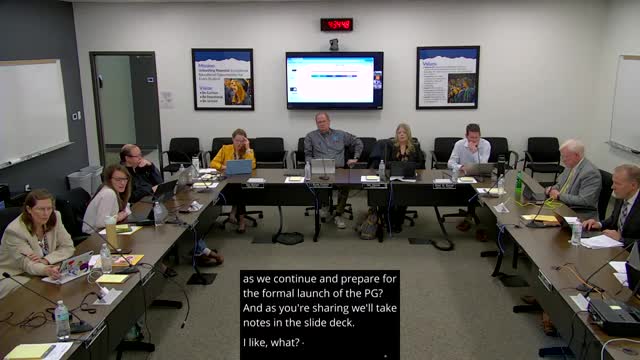Jordan School District emphasizes student ownership through new proficiency scales
April 09, 2025 | Jordan School District, Utah School Boards, Utah
This article was created by AI summarizing key points discussed. AI makes mistakes, so for full details and context, please refer to the video of the full meeting. Please report any errors so we can fix them. Report an error »

In a recent meeting of the Jordan School District Board of Education, educators and administrators gathered to discuss the evolving landscape of student learning and the importance of fostering skills that extend beyond traditional classroom instruction. The atmosphere was charged with enthusiasm as board members explored how to better prepare students for lifelong learning and critical thinking.
A key focus of the discussion was the implementation of proficiency scales designed to enhance student engagement and understanding. One board member highlighted the significance of these scales in promoting conversations between students and their families about learning competencies. This initiative aims to bridge the gap between classroom experiences and home discussions, encouraging families to engage with their children’s educational journeys.
The conversation turned to the concept of "credible sources," a term that emerged frequently in the context of teaching students how to discern reliable information. Board members emphasized the need for clear definitions and consistent teaching methods across various subjects. This approach not only aligns with state standards but also empowers teachers to model critical thinking skills, inspiring students to become curious learners.
As the dialogue progressed, the importance of visual learning was underscored. One member expressed concern that merely describing concepts might not be sufficient for all students. They advocated for incorporating more visual aids and demonstrations in teaching practices, suggesting that seeing concepts in action could enhance understanding and retention.
The board also discussed the upcoming professional development day for teachers, where they plan to introduce these proficiency scales and demonstrate effective teaching practices. The goal is to equip educators with the tools to foster an environment where students are encouraged to seek challenges and learn from their experiences. This shift from educators as mere conveyors of knowledge to facilitators of experience reflects a broader trend in education, emphasizing resilience and ownership of learning.
In closing, the meeting underscored a collective commitment to nurturing a culture of curiosity and responsibility among students. By integrating these new teaching strategies and fostering open communication between home and school, the Jordan School District aims to cultivate a generation of learners who are not only proficient in their studies but also equipped to navigate the complexities of the world beyond the classroom.
A key focus of the discussion was the implementation of proficiency scales designed to enhance student engagement and understanding. One board member highlighted the significance of these scales in promoting conversations between students and their families about learning competencies. This initiative aims to bridge the gap between classroom experiences and home discussions, encouraging families to engage with their children’s educational journeys.
The conversation turned to the concept of "credible sources," a term that emerged frequently in the context of teaching students how to discern reliable information. Board members emphasized the need for clear definitions and consistent teaching methods across various subjects. This approach not only aligns with state standards but also empowers teachers to model critical thinking skills, inspiring students to become curious learners.
As the dialogue progressed, the importance of visual learning was underscored. One member expressed concern that merely describing concepts might not be sufficient for all students. They advocated for incorporating more visual aids and demonstrations in teaching practices, suggesting that seeing concepts in action could enhance understanding and retention.
The board also discussed the upcoming professional development day for teachers, where they plan to introduce these proficiency scales and demonstrate effective teaching practices. The goal is to equip educators with the tools to foster an environment where students are encouraged to seek challenges and learn from their experiences. This shift from educators as mere conveyors of knowledge to facilitators of experience reflects a broader trend in education, emphasizing resilience and ownership of learning.
In closing, the meeting underscored a collective commitment to nurturing a culture of curiosity and responsibility among students. By integrating these new teaching strategies and fostering open communication between home and school, the Jordan School District aims to cultivate a generation of learners who are not only proficient in their studies but also equipped to navigate the complexities of the world beyond the classroom.
View full meeting
This article is based on a recent meeting—watch the full video and explore the complete transcript for deeper insights into the discussion.
View full meeting

